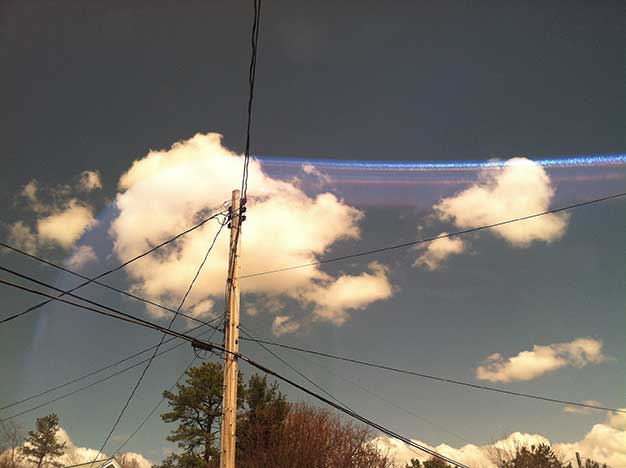FYI: Sunglasses Make Can Be A Makeshift Polarizing Filter For A Smartphone Camera
Get all lomo on your smartphone photos

For photographers, sunglasses are essential. After all, our eyes are crucial to our work and protecting them from the sun isn’t something to be taken lightly. But, a pair of sunglasses can also be a useful too to use when taking pictures with your phone. Here are some tips for getting the most out of your makeshift filters.
The color of the lenses in your sunglasses is obviously going to have the most immediately noticeable effect on your images. If you want the effect to be noticeable, look for lenses with strong colors in them. Your camera smartphone camera is often going to be trying to white balance out the color cast the lens is causing, so don’t be surprised if the color effect isn’t quite as strong as you expect. If you can control your white balance — something that iPhone users can’t, but Android users can do — lock it down in daylight and let the tint do its dirty magic.
If you can find a pair with the tinting applied in a gradient, you can actually vary the look of your filtered image by changing its placement on the lens.

This image was shot through a pair of slightly purple tinted sunglasses
_

_
The same image with no filter in front of the lens.
Lens material will also make a big difference when it comes to how your sunglass filters perform. High-end pairs have lenses made of glass or other materials with strong anti-reflective coatings. Cheap plastic lenses, however, will often have none of that and will throw light all over the place in a way that makes your normal smarthpone lens look immaculate. Which one you prefer simply depends on your taste or your sunglas budget.
There are a few different methods for using the sunglasses filter. If you just want to utilize the polarization attributes (more on that in a minute) of your lens and throw a nice, clean color cast over the photo, try to get your camera as close to the sunglass lens as possible. You want them to be completely parallel and leave as little room as possible between the two for light to bounce back and forth.
If you crave flare, leave some space between the sunglasses and the smartphone. This gives the light time to bounce around between the two, resulting in weird refracted light patterns and odd reflections. This is especially effective if you’re using a cheap set of glasses. You can see the massive effect happening in the image at the top of this post. For reference, here’s the same photo without the filter

Either way you choose to shoot, plan to shoot more frames than you normally would. Flare can be unpredictable, and no sunglasses are completely immune to it.
To get the best results, you’re going to want to do this in bright conditions. Not only will the sun cause all that lomo-like distortion, but the sunglasses will also be reducing the amount of light that gets through to the sensor. That means slower shutter speeds or higher ISOs, neither of which go well with smartphone cameras. Color casts and clare can look cool, but camera shake and digital noise, not so much.
You also want to make sure your sunglasses are clean. Give them a good wipe down with a cleaning cloth before sticking them in front of the camera. Smudges — and even tiny little pieces of dust — can be a problem. Sometimes they’ll show up in your images, but if the lenses are dirty enough, they may actually make focusing more difficult.
Now, a note about polarization. Almost any halfway decent pair of sunglasses is going to be polarized, but don’t think that means they’re going to work like a true polarizer filter. Ideally, they would block scattered light that can steal clarity from your photos. The truth, however, is that polarization is added in one of the layers of the sunglass lens and the quality of materials can make a big difference on how effective it is. If you have polarized glasses, try rotating them in front of your image to see if it changes. You can also do this with 3D glasses you, um, borrow from the movie theater. They produce a pronounced linear polarization effect because it’s a key component of viewing a 3D movie.

Now, before you go commenting about how I ruined the images in this post, I should say that I actually agree with you. This is something that should be done occasionally and only when the conditions are really right for it. But, if you’re the type that’s going to apply an Instagram filter later anyway, this might help you stand out from the pack a little.
